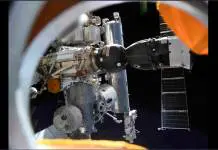
Last week, Lockheed Martin announced that it would start Phase II of its Next Space Technologies for Exploration Partnerships (NextSTEP) contract with NASA. This involves developing a prototype for an astronaut habitat usable during Mars missions from a recycled cargo container of the Space Shuttle program.
The goal of this initiative is to develop and test here on Earth the technologies that will be necessary for astronauts embarking on interplanetary journeys over the next few decades. Habitats will play a big role in human colonization as people are expected to spend months and years living in space.
As part of the public-private partnership, Lockheed Martin will also look into some aspects of the Deep Space Gateway. The lunar outpost is also supposed to have astronaut habitats, and the program will provide an opportunity to advance some work on the ambitious space station.
How will Lockheed Martin build the Mars habitat?
NASA will grant Lockheed Martin permission to modify the Donatello capsule from a cargo container into a living habitat for astronauts with a course traced towards the Red Planet.
Donatello is one of three Multi-Purpose Logistics Modules (MPLM) originally developed by the Italian Space Agency. Its brothers, Raffaello and Leonardo, took 11 resupply trips to the International Space Agency from 2001 until 2011 when the Space Shuttle program was retired.
The capsule selected for the refurbishing mission measures 21 feet long and 15 feet in diameter, and it is currently located at the Space Station Processing Facility, which is at NASA’s Kennedy Space Center in Cape Canaveral, Florida.
There, Lockheed Martin will have 18 months to give Donatello an extreme makeover and turn it into a habitat prototype suitable for extended living periods in deep space. The task is not to build a perfect spacecraft module but find out the potential challenges and flaws that didn’t surface in the drawing board.
Phase I of Lockheed Martin’s NextSTEP contract with NASA consisted precisely of designing the habitat and other potential projects for the space agency, but now the time has come to get things done to see how well they would work beyond paper.
The security company and spacecraft builder will embrace the power of artificial intelligence and mixed reality to help them reach that 18-month deadline, making use of virtual behavior models and so on to see how the habitat would react to deep space conditions and human inhabitants over prolonged lapses of time.
Moreover, a new Deep Space Avionics Integration Laboratory will be erected to tackle the titanic task of integrating the NextSTEP habitat both into the Deep Space Gateway and into the Orion spacecraft. This project, however, has no deadline and is intended as an exercise on how the future station could work.
Source: Lockheed Martin











